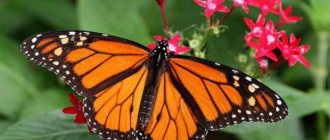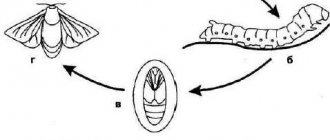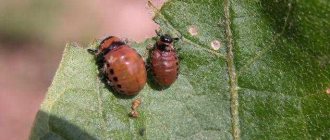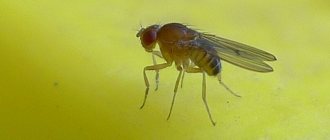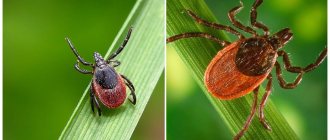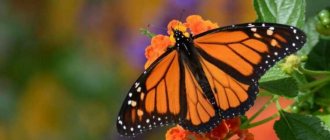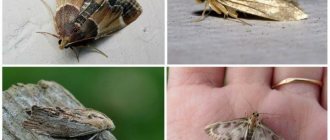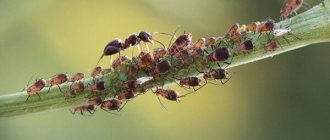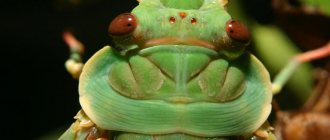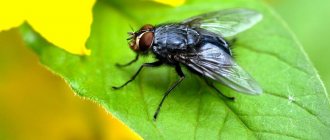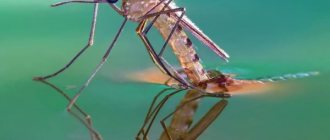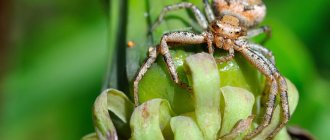Numerous orders of insects are conventionally divided into two groups. In representatives of the first group, the larvae emerging from the egg are similar to adult individuals and differ from them only in the absence of wings. These include cockroaches, grasshoppers, locusts, bedbugs, praying mantises, stick insects, etc. These are insects with incomplete transformation. In the second group, the eggs hatch into worm-like larvae, completely different from their parents, which then turn into pupae, and only after that do adult winged insects emerge from the pupae. This is the development cycle of insects with complete transformation. These include mosquitoes, bees, wasps, flies, fleas, beetles, caddis flies, and butterflies.
Types of butterfly eggs
Butterfly eggs come in various shapes - round, flattened, oval, spindle-shaped, smooth or with a cellular surface, covered with spines or ribs. The color of the eggs is also different, most often whitish, light green or yellow, in addition, brownish, brownish-violet, reddish. The eggs of many species change color as they develop.
The manner in which eggs are laid may differ among different species of butterflies. Eggs can be laid one at a time or several at a time, or in large groups, up to several hundred in one clutch. Eggs can be laid on leaves, stems, flowers, fruits of plants, in cracks in tree bark, on soil, lichens, and on dry plant remains. After laying, females of some species cover their eggs with hairs from their abdomen.
Ursa
The front wings of this butterfly are dark brown, the span is 50 - 80 mm. The hind wings are red-yellow with black or dark blue spots. Dipper caterpillars are densely covered with brown hairs, which is why the butterflies got their name. Caterpillars feed on plants, some of which are poisonous. The poison accumulates in their body and remains in the body even after the caterpillars turn into butterflies. The venom of some species can be fatal to small animals.
Ursa
Caterpillar structure
The body of caterpillars consists of thirteen segments, of which three are thoracic and ten are abdominal. The thoracic segments bear a pair of jointed legs; the abdominal segments usually have five pairs of false legs; some types of abdominal legs have two or three pairs, or they are underdeveloped. The appearance of caterpillars is very diverse and often differs even among closely related species.
Many are brightly and variegatedly colored, some have outgrowths in the form of horns, spikes, and bumps. The surface of the body is smooth with sparse scales or covered with dense hairs, warts, and spines. Body proportions also vary: some caterpillars are short and thick, others are thin and long.
Goldentail
This butterfly itself, as well as its caterpillars, have poisonous hairs. Touching such a butterfly can cause an allergic reaction. It is enough to simply touch the goldentail or its caterpillar so that the place of contact turns red and begins to itch. A serious problem can arise if a hair from the body of this insect gets into the eye. In this case, you cannot do without medical help. Lacetails live throughout Europe.
Goldentail
What do caterpillars eat?
Caterpillars of most butterfly species feed on green parts of plants - leaves, flowers, unripe fruits. Some develop inside branches and trunks, feed on wood, on lichens and dead parts of plants, on animal remains such as wool, down, feathers, and also on wax.
Some species are predatory, feeding on ant larvae and scale insects.
Number
As we previously noted, there are about one and a half hundred thousand known species of butterflies in the world. Yes, just with a reservation, because scientists claim that there are approximately the same number of unknown or recorded species on the entire planet.
At the same time, many people do not know for sure how long butterflies live. In fact, it is difficult to give an exact figure, because some species live for about six months, while others can live for a whole year.
Transformation of a caterpillar into a butterfly - the pupa stage
Pupation is the most vulnerable process in the butterfly's development cycle, and most caterpillars prepare carefully for it. The pupal stage in different species can last from several days to several years. A long pause (stop in development) of pupae is an adaptation that allows the species to survive unfavorable years. If in the first year unsuitable conditions arise and the butterflies emerging from the pupae die, the population is replenished by previously diapausing pupae that emerge the next year.
The butterfly formed inside the pupal shell has very short, soft wings. When emerging from the pupa, it needs to climb onto some vertical surface in order to hang its wings, which will give them the opportunity to straighten. After which the wings gradually harden, and during this time the butterfly sits motionless.
When is it dangerous to help?
One day a man found a butterfly cocoon and took it home. He decided to observe the transformation process. The cocoon opened, and for several hours in a row this man observed the difficulties the butterfly had to go through in order to get out. She tried to get out through the small hole for quite a long time and suddenly the moment came when it seemed to him that the butterfly had given up and stopped fighting. It looked like she was stuck and completely motionless.
Taking pity on her, the man decided to help her and cut off the cocoon. Thanks to this, the butterfly got out of the cocoon, but its body was swollen like a caterpillar, its wings were small and unopened. The man expected her wings to strengthen and grow and her body to transform, but nothing else happened. The butterfly pitifully dragged its swollen body in a circle, now doomed to do this for the rest of its life.
Man, out of his kindness, did not understand that he had interfered with the natural process of nature. The efforts that the butterfly made were simply necessary for metamorphosis. Making its way through the narrow opening of the cocoon, the liquid from the butterfly's body would pass into the wings, making them large and strong for flight. By depriving the butterfly of its struggle, man doomed it to a miserable existence and deprived it of a wonderful future. Likewise, people become strong and successful and transform into a better image only when they go through certain difficulties and put in a lot of effort.
Sources:
https://www.lepidopterolog.ru/metamorf#:
https://www.krasnouhie.ru/zhiznennyj-cikl-babochek-metamorfoz-razvitie-babochki.html
https://www.danaida.ru/obsh/razm.htm
Butterfly structure
The butterfly's body consists of three sections - the head, thorax and abdomen, which contains internal organs.
The head bears antennae, palps, complex compound eyes and mouthparts. The vast majority of butterflies have mouthparts of the sucking type and are a thin long tube-proboscis, which is curled into a spiral when at rest. Many butterflies have underdeveloped mouthparts and are thus unable to feed, subsisting on energy reserves accumulated during the caterpillar stage.
The antennae of butterflies are an organ of smell and come in various shapes - filamentous, club-shaped, feathery, comb-shaped and others. The sense of smell of some butterflies is very developed; males of such species are able to detect the scent of a female at a considerable distance.
The chest of butterflies bears three pairs of jointed legs and two pairs of wings, while the females of some species have underdeveloped wings or are completely wingless, and in some species they are also legless. The pattern on the wings of butterflies is formed by the scales covering them, hence the scientific name of the order - Lepidoptera.
Madagascar comet
The Madagascar comet or moon moth is a very large lepidopteran insect from the peacock eye family. It is endemic to Madagascar, that is, found only on this island, in humid forests. The Madagascar comet is beautifully bred in captivity, decorating butterfly gardens and many collections. The great demand for it has led to the Malagasy selling the eggs of this butterfly for export; the insect population on its native island is slowly decreasing. The butterfly lays eggs on the underside of plant leaves, which the caterpillars then feed on. After 10-20 days, the larvae hatch, go through four molts in 2 months, turning into large green caterpillars. Each caterpillar makes a cocoon and pupates in it, and only then a beautiful butterfly appears.
Madagascar comet
Types of butterflies
The color of butterfly wings is varied. In some they are beautifully and brightly colored, while in others, on the contrary, they have a modest protective color, allowing them to be invisible on flowers and herbs, tree bark, stones, and lichens. Many species are characterized by sexual dimorphism, that is, a pronounced external difference between male and female in color, shape and size of wings, as well as in the structure of the antennae. Occasionally there are individual, atypically colored individuals called aberrants.
Gynandromorph butterflies, that is, individuals that combine the characteristics of a male and a female, are extremely rare. Gynandromorphs of species that are characterized by pronounced sexual dimorphism look very unusual. In this case, on one side of the butterfly’s body there are wings with the color of the male, and on the other - with the color of the female.
Most butterflies are active at dusk and at night, with a much smaller number of species active during the day. However, it is the diurnal butterflies that are the most visible, and, as a result, the best studied. Many butterflies are good flyers; some species are characterized by regular migrations, which often leads to their wide distribution. Others, on the contrary, inhabit only small geographical regions; such species are called endemic.
Lifestyle
Be it a red butterfly, or a peacock's eye, they all share the same lifestyle. Basically, they do not stop flying either day or night. A small exception in this regard are moths, which prefer activity at certain times of the day.
There are butterflies that are able to eat while flying, while others simply love life in and around caves. But among them there is only one single butterfly that can live not only in the air, but also in water.
